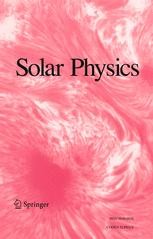Editors' Choice: "On the Expansion Speed of Coronal Mass Ejections"
 Balmaceda, L.A., Vourlidas, A., Stenborg, G. et al. On the Expansion Speed of Coronal Mass Ejections: Implications for Self-Similar Evolution. Sol Phys 295, 107 (2020). https://doi.org/10.1007/s11207-020-01672-6
Balmaceda, L.A., Vourlidas, A., Stenborg, G. et al. On the Expansion Speed of Coronal Mass Ejections: Implications for Self-Similar Evolution. Sol Phys 295, 107 (2020). https://doi.org/10.1007/s11207-020-01672-6
Editor's Choice (Research Article)
Published: 04 August 2020
Topical Collection: Towards Future Research on Space Weather Drivers
Abstract:
A proper characterization of the kinematics of coronal mass ejections (CMEs) is important not only for practical purposes, i.e. space weather forecasting, but also to improve our current understanding of the physics behind their evolution in the middle corona and into the heliosphere. The first and core step toward this goal is the estimation of the three main components of the CME speeds, namely the expansion speed relative to the center of motion in both, the radial and lateral directions, and the propagation speed (i.e. Vfront, Vlat, Vbulk, respectively). To this aim, we exploit the observations obtained with COR2 onboard the Solar Terrestrial Relations Observatory (STEREO) from 2007 to 2014 to investigate the relationships among the different components as a function of the heliocentric distance of the CME events. Here, we analyze a sample of 475 CMEs. The selected events exhibit clear flux rope signatures as seen either edge on (i.e. F-CMEs: three-part structure, presence of a cavity) or face on (i.e. L- or loop CMEs) in white light images. Our main findings are: i) L-CMEs show almost twice as large expansion speeds compared to F-CMEs (Vfront,L=367 kms−1, Vlat,L=365 kms−1 vs. Vfront,F=215 kms−1, Vlat,F=182 kms−1); ii) the relationship between the two components of the expansion speeds is linear and does not change with height; iii) the ratio of the propagation speed to the lateral expansion speed is a function of the angular width that describes the self-similarity evolution of a CME; and iv) 65% of the CMEs exhibit a self-similar evolution at 10 solar radii, reaching 70% at 15 solar radii.
Solar Physics Editor's Choice:
In each volume of Solar Physics, a few articles are marked as “Editors’ Choice”. The primary criterion is original, high-quality research that is of wide interest within the community.
